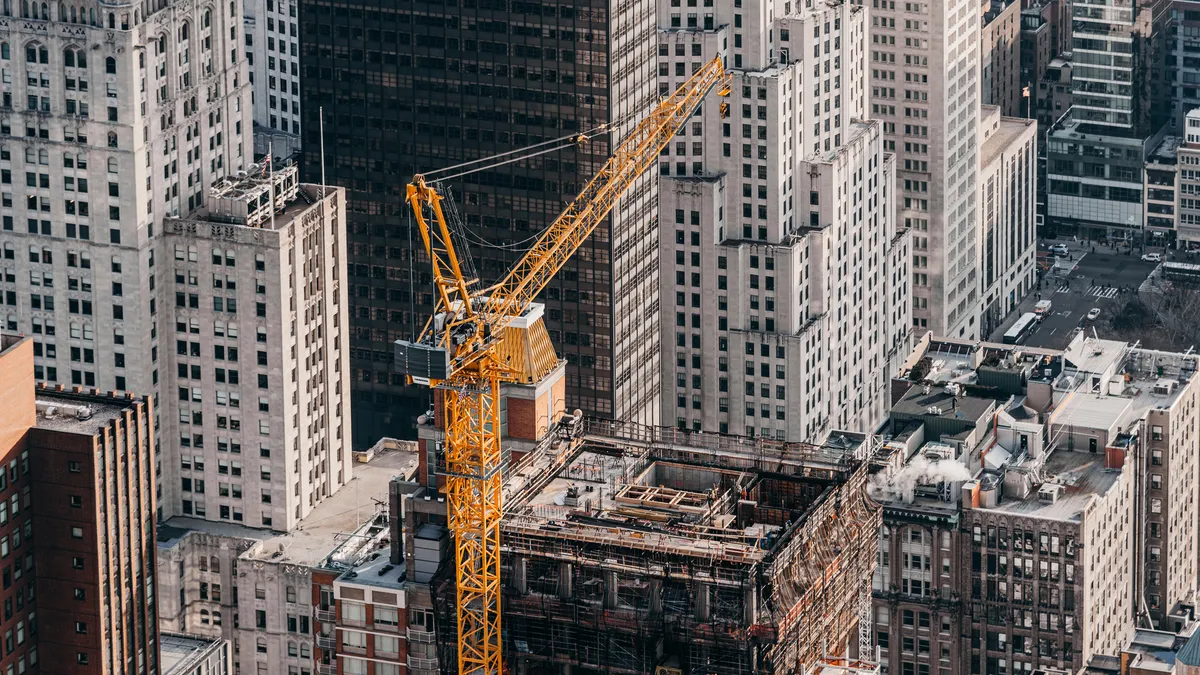Dive Brief:
-
Insulating existing buildings with carbon-storing materials or materials with low embodied carbon can reduce their emissions and potentially remove additional carbon emissions from the environment, according to an RMI report on Tuesday.
-
The up-front carbon emissions associated with “deep energy retrofits” are 50% to 75% lower than such emissions from new construction, the report says. Using low-embodied-carbon and carbon-storing materials for such retrofits can reduce a building’s operating emissions even further, according to RMI.
-
Chris Magwood, a manager in RMI’s carbon-free buildings program, said in an email that “by reducing upfront carbon emissions and enabling immediate operational reductions, we can quickly see the climate benefits of our investment.”
Dive Insight:
A growing number of local and state governments, including Denver and Portland, Oregon, aim to reduce greenhouse gas emissions from buildings to reduce their climate impact by adopting building performance standards and other measures. That trend is likely to accelerate in 2023, in part due to additional funding in the Inflation Reduction Act to help states adopt new building energy codes.
Typical weatherization approaches lower energy use in existing buildings by 15% to 20% in cold and mixed-humid climates such as the Northeast and mid-Atlantic regions of the U.S., according to RMI.
But deep energy retrofits, which involve installing a heavily insulated shell on the exterior of a building, can lower building emissions further, the report says.
“In cold and mixed-humid climates, when deep energy retrofit assemblies have average embodied carbon, operating emissions reductions can be realized in less than four years,” according to RMI.
Under the best-case scenario, RMI estimates that deep energy retrofits that use lower-embodied-carbon and carbon-storing materials could allow an existing building to begin storing carbon immediately. Corkboard insulation, wood fiberboard, hempcrete, wood fiber batt, cellulose and hemp fiber batt are suitable carbon-storing materials for deep energy retrofits, according to RMI.
“This analysis demonstrates that the best path for the future built environment is the widespread use of carbon-storing materials in deep energy retrofits, which would transform existing buildings from carbon emitters to carbon-storing buildings,” the report says. “Retrofitted buildings are also more climate-resilient, healthier, and more affordable to operate with decreased energy loads and not subject to fluctuating fossil fuel prices. They also reduce demand on the local grid.”
Embodied carbon emissions stem directly from the life cycle of a material or product, including disposal or recycling, according to RMI.
Up-front embodied carbon emissions, including raw material extraction, transportation and manufacturing, occur before a building is occupied and comprise 65-85% of total life cycle emissions. Such emissions “are committed to the atmosphere before a building is occupied, creating a large spike of emissions that cannot be remediated,” the report says.
Concrete, steel and other conventional building materials have higher up-front embodied carbon emissions than some newer alternatives, with cement responsible for 7% of global greenhouse gas emissions.
“Embodied carbon is a key driver of climate change, causing 11%–21% of global emissions,” the report says. “Retrofitting buildings to reduce operating emissions is a critical strategy for global emissions reductions.”











